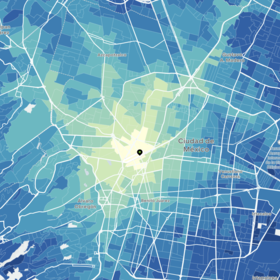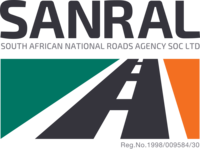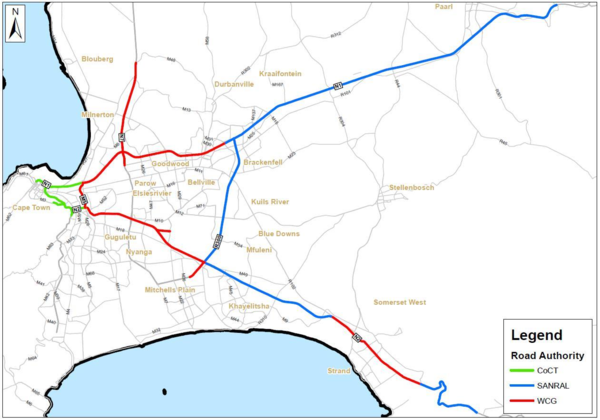
Uber Movement SANRAL Cape Town Challenge
Meet the Winners of the Uber Movement SANRAL Cape Town Challenge
Approximately 1.35 million people die each year globally as a result of road traffic crashes. The United Nations’ 2030 Agenda for Sustainable Development set an ambitious target of halving the global number of deaths and injuries from road traffic crashes by 2020.
In South Africa alone, approximately 1 million road accidents are reported each year, resulting in approximately 31.9 fatalities per 100,000 people each year. This fatality rate could be dramatically reduced by ensuring that authorities are able to respond to reported incidents as quickly and efficiently as possible.
The objective of this challenge is to build a machine learning model that accurately predicts when and where the next road incident will occur in Cape Town, South Africa. Data scientists will build their models on historic road incident data as well as traffic pattern data from Uber.
The resulting model will enable South African authorities to anticipate where they will be needed next and to put measures in place that will help ensure the safety of all Cape Town’s residents.
About Uber Movement (movement.uber.com)

Uber Movement is a website that helps urban planners, city officials, riders and the public better understand the transportation needs of their cities. Presently, Movement shows average travel times between zones in a city, derived from anonymous and aggregated on-trip data from Uber vehicles. Uber is planning the next set of functionality and datasets that will be added to Movement in the coming months. Uber Movement is available for 22 cities around the world.
About SANRAL (nra.co.za)

The South African National Roads Agency SOC Limited, generally known as SANRAL, is an independent, statutory company registered in terms of the Companies Act. The South African government, represented by the Minister of Transport, is the sole shareholder and owner of SANRAL.
SANRAL has a distinct mandate – to finance, improve, manage and maintain the national road network (the “economic arteries” of South Africa). SANRAL is committed to carry out its mandate by protecting and preserving the environment through context-sensitive solutions.
About Freeway Management System (nra.co.za/FMS)
The Cape Town Freeway Management System (CT FMS) is a project jointly funded by the CoCT, PGWC and SANRAL. The operations of the CT FMS are located in the Cape Town Transport Management Centre (TMC) in Goodwood. Operators are responsible for visual surveillance of the freeways to detect any freeway related incidents, to report the incidents to the relevant authorities as well as to provide information to the driving public using Variable Message Signs (VMS) located along the freeways and a Twitter Website.
The CT FMS currently has 239 CCTV cameras, 50 Variable Message Signs, 82 vehicle counting/detector stations and 10 weather stations to monitor and manage the major freeways around Cape Town. The freeway network monitored by the CT FMS operations, per road authority is illustrated in the Figure below.

You may use only the datasets provided for this competition. Earlier version of the training data (prior to 28 January 2020) that included incident data from 2019 may not be used in your solution.
Teams and collaboration
You may participate in this competition as an individual or in a team of up to four people. When creating a team, the team must have a total submission count less than or equal to the maximum allowable submissions as of the formation date. A team will be allowed the maximum number of submissions for the competition, minus the highest number of submissions among team members at team formation. Prizes are transferred only to the individual players or to the team leader.
Multiple accounts per user are not permitted, and neither is collaboration or membership across multiple teams. Individuals and their submissions originating from multiple accounts will be disqualified.
Code must not be shared privately outside of a team. Any code that is shared, must be made available to all competition participants through the platform. (i.e. on the discussion boards).
Datasets and packages
The solution must use publicly-available, open-source packages only. Your models should not use any of the metadata provided.
You may use only the datasets provided for this competition.
The data used in this competition is the sole property of Zindi and the competition host. You may not transmit, duplicate, publish, redistribute or otherwise provide or make available any competition data to any party not participating in the Competition (this includes uploading the data to any public site such as Kaggle or GitHub). You may upload, store and work with the data on any cloud platform such as Google Colab, AWS or similar, as long as 1) the data remains private and 2) doing so does not contravene Zindi’s rules of use.
You must notify Zindi immediately upon learning of any unauthorised transmission of or unauthorised access to the competition data, and work with Zindi to rectify any unauthorised transmission or access.
Your solution must not infringe the rights of any third party and you must be legally entitled to assign ownership of all rights of copyright in and to the winning solution code to Zindi.
Submissions and winning
You may make a maximum of 10 submissions per day. Your highest-scoring solution on the private leaderboard at the end of the competition will be the one by which you are judged.
As the challenge has now closed, the maximum number of submissions per day is 30.
Zindi maintains a public leaderboard and a private leaderboard for each competition. The Public Leaderboard includes approximately 20% of the test dataset. While the competition is open, the Public Leaderboard will rank the submitted solutions by the accuracy score they achieve. Upon close of the competition, the Private Leaderboard, which covers 100% of the test dataset, will be made public and will constitute the final ranking for the competition.
If you are in the top 20 at the time the leaderboard closes, we will email you to request your code. On receipt of email, you will have 48 hours to respond and submit your code following the submission guidelines detailed below. Failure to respond will result in disqualification.
If your solution places 1st, 2nd, or 3rd on the final leaderboard, you will be required to submit your winning solution code to us for verification, and you thereby agree to assign all worldwide rights of copyright in and to such winning solution to Zindi.
If two solutions earn identical scores on the leaderboard, the tiebreaker will be the date and time in which the submission was made (the earlier solution will win).
The winners will be paid via bank transfer, PayPal, or other international money transfer platform. International transfer fees will be deducted from the total prize amount, unless the prize money is under $500, in which case the international transfer fees will be covered by Zindi. In all cases, the winners are responsible for any other fees applied by their own bank or other institution for receiving the prize money. All taxes imposed on prizes are the sole responsibility of the winners.
You acknowledge and agree that Zindi may, without any obligation to do so, remove or disqualify an individual, team, or account if Zindi believes that such individual, team, or account is in violation of these rules. Entry into this competition constitutes your acceptance of these official competition rules.
Please refer to the FAQs and Terms of Use for additional rules that may apply to this competition. We reserve the right to update these rules at any time.
Reproducibility
- If your submitted code does not reproduce your score on the leaderboard, we reserve the right to adjust your rank to the score generated by the code you submitted.
- If your code does not run you will be dropped from the top 10. Please make sure your code runs before submitting your solution.
- Always set the seed. Rerunning your model should always place you at the same position on the leaderboard. When running your solution, if randomness shifts you down the leaderboard we reserve the right to adjust your rank to the closest score that your submission reproduces.
- We expect full documentation. This includes:
- All data used
- Output data and where they are stored
- Explanation of features used
- Your solution must include the original data provided by Zindi and validated external data (no processed data)
- All editing of data must be done in a notebook (i.e. not manually in Excel)
Data standards:
- Your submitted code must run on the original train, test, and other datasets provided.
- If external data is allowed it must not exceed 1 GB. External data must be freely and publicly available, including pre-trained models with standard libraries. If external data is allowed, any data used should be shared on the discussion forum.
- Packages:
- You must use the most recent versions of packages. Custom packages in your submission notebook will not be accepted.
- You may only use tools available to everyone i.e. no paid services or free trials that require a credit card.
Consequences of breaking any rules of the competition or submission guidelines:
- First offence: No prizes or points for 6 months. If you are caught cheating all individuals involved in cheating will be disqualified from the challenge(s) you were caught in and you will be disqualified from winning any competitions or Zindi points for the next six months.
- Second offence: Banned from the platform. If you are caught for a second time your Zindi account will be disabled and you will be disqualified from winning any competitions or Zindi points using any other account.
Monitoring of submissions
- We will review the top 20 solutions of every competition when the competition ends.
- We reserve the right to request code from any user at any time during a challenge. You will have 24 hours to submit your code following the rules for code review (see above).
- If you do not submit your code within 24 hours you will be disqualified from winning any competitions or Zindi points for the next six months. If you fall under suspicion again and your code is requested and you fail to submit your code within 24 hours, your Zindi account will be disabled and you will be disqualified from winning any competitions or Zindi points.
Further updates and rulings of note:
- Multiple accounts per user, collaboration or membership across multiple teams are not allowed.
- Code may not be shared privately. Any code that is shared, must be made available to all competition participants through the platform.
- Solutions must use publicly-available, open-source packages only, and all packages must be the most updated versions.
- Solutions must not infringe the rights of any third party and you must be legally entitled to assign ownership of all rights of copyright in and to the winning solution code to Zindi.
- You will be disqualified if you do not respond within the timeframe given in the request for code.
We reserve the right to update these rules at any time.
The error metric for this competition is the F1 score, which ranges from 0 (total failure) to 1 (perfect score). Hence, the closer your score is to 1, the better your model.
F1 Score: A performance score that combines both precision and recall. It is a harmonic mean of these two variables. The formula is given as: 2*Precision*Recall/(Precision + Recall)
Precision: This is an indicator of the number of items correctly identified as positive out of total items identified as positive. The formula is given as: TP/(TP+FP)
Recall / Sensitivity / True Positive Rate (TPR): This is an indicator of the number of items correctly identified as positive out of total actual positives. The formula is given as: TP/(TP+FN)
Where:
TP=True Positive
FP=False Positive
TN=True Negative
FN=False Negative
Your submission file should look like:
Where 1 indicates at least one incident and 0 indicates no incident.
datetime x segment_id predicition <string> <number> 2019-01-01 01:00:00 x S0B3CGQ 1 2019-01-01 01:00:00 x RYJYAPI 0 2019-01-01 01:00:00 x U3KP57C 1
1st Place: $2 750 USD
2nd Place: $1 750 USD
3rd Place: $1 000 USD
Competition closes on 9 February 2020.
Final submissions must be received by 11:59 PM GMT.
We reserve the right to update the contest timeline if necessary.
Join the largest network for
data scientists and AI builders